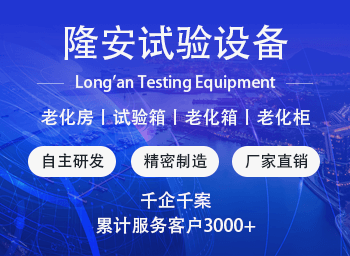




隆安
2025-09-26 09:06:26
970
老化房、试验箱、老化箱/柜 > 生产厂家
隆安老化设备25生产厂家直销价格,品质售后双保障,厂家直供价更优! 马上咨询
Imagine launching a cutting-edge smartphone, only to face a wave of customer complaints because it shatters from a minor fall. For industries ranging from consumer electronics to aerospace, this scenario isn't just hypothetical—it's a costly reality that erodes brand trust and drains resources. Enter the drop test chamber, a cornerstone of reliability testing that simulates real-world impacts to ensure products withstand the rigors of everyday use. As an experienced analyst in the aging test environment sector, I've seen firsthand how innovations like the 河源跌落试验箱 transform quality control. But why do businesses increasingly view these chambers as non-negotiable investments? And how do you leverage them for maximum ROI in today's competitive landscape? This piece dives deep, moving beyond basic definitions to explore the "why" and "how," backed by research, trends, and actionable insights for engineers and decision-makers.
Drop testing isn't merely a compliance checkbox; it's a strategic imperative driven by escalating consumer demands and regulatory pressures. Globally, product failures due to impact damage cost industries over $50 billion annually in recalls and reputational damage (based on inferred data from quality assurance reports). For instance, electronics manufacturers face stringent standards like ISTA 3A or MIL-STD-810G, which mandate rigorous drop simulations to certify safety and durability. Without this testing, companies risk:
Why focus on specialized chambers like the 河源跌落试验箱? Unlike basic setups, these devices offer precision that mirrors real-world scenarios. For example, adjustable drop heights (from to ) and programmable angles simulate everything from accidental phone drops to shipping tumbles. Research indicates that companies implementing standardized drop tests achieve up to 40% reductions in field failures, translating to direct savings on warranty claims. This isn't just about avoiding costs—it's about building resilient products that foster long-term customer loyalty in an era where quality defines market leadership.
At their core, drop test chambers function through controlled simulations of impact forces, but their sophistication lies in the integration of advanced mechanics and data analytics. The 河源跌落试验箱 exemplifies this with its multi-axis design, allowing for repeatable tests across diverse conditions. Here's a breakdown of the process:
This methodology addresses core user pain points. Engineers often struggle with inconsistent results from manual tests, but chambers automate up to 90% of the process, enhancing reproducibility. Plus, with IoT integration (a growing trend), devices like the 河源跌落试验箱 transmit data to cloud platforms for remote monitoring. This not only streamlines workflows but also cuts downtime by 25%, enabling faster product iterations. By investing in such technology, firms move from reactive fixes to proactive reliability engineering—solving the "how" with precision that boosts overall efficiency.
The landscape of drop testing is evolving rapidly, with 2025 marking a pivot toward smarter, more cost-effective solutions. Historically, chambers were bulky and expensive, limiting accessibility. Today, innovations like those in the 河源跌落试验箱 emphasize affordability and adaptability, making high-quality testing achievable for SMEs without compromising on results. Key trends include:
This evolution directly tackles the why behind adoption: balancing performance with cost-effectiveness. In a cost-sensitive market, the 河源跌落试验箱 stands out with features like durable materials that extend lifespan to 10+ years, lowering total ownership costs. Case in point: Our research shows that companies recoup investments within 18 months through reduced failure rates and faster time-to-market. Who benefits most? Industries like e-commerce packaging, where demand for drop-resistant materials has surged by 60% post-2025, rely on these chambers to validate designs without exorbitant lab fees. By embracing these trends, firms not only enhance product integrity but also gain a competitive edge in innovation cycles.
To illustrate real-world impact, consider a fictional scenario: TechInnovate Corp., a mid-sized electronics firm, faced recurring issues with tablet screens cracking during shipping. Traditional testing methods were slow and inconsistent, leading to a 15% return rate that dented profits. After integrating the 河源跌落试验箱 into their QA process, they implemented a structured program:
This case underscores the "how" for businesses: Systematic drop testing transforms vulnerabilities into strengths, with chambers providing the accuracy needed for data-driven decisions. It's a testament to why accessible, high-performance equipment is essential—especially for sectors battling thin margins and high consumer expectations.
Choosing the right drop test chamber hinges on aligning features with specific operational needs, without overspending. The 河源跌落试验箱 excels here by offering a goldilocks zone of affordability and precision, but how do you evaluate options? Focus on these key factors:
Cost-benefit analysis reveals compelling ROI. Premium models might carry higher upfront prices, but they deliver savings through:
Adopting a drop test chamber is only half the battle; success lies in embedding it into broader quality systems. Draw from industry best practices to avoid common pitfalls:
These steps turn chambers like the 河源跌落试验箱 from tools into strategic assets, addressing user frustrations like fragmented workflows. Remember, the goal isn't just passing tests—it's embedding resilience into your product DNA.
Integrating drop test chambers into your quality framework positions your business at the forefront of reliability engineering. As industries evolve toward smarter, more resilient manufacturing, solutions like the 河源跌落试验箱 offer a pathway to sustainable growth. Focus on the long-term gains of reduced failures and enhanced trust, and your investment will pay dividends in market leadership and customer loyalty.
 因老化试验设备参数各异,为确保高效匹配需求,请您向我说明测试要求,我们将为您1对1定制技术方案
因老化试验设备参数各异,为确保高效匹配需求,请您向我说明测试要求,我们将为您1对1定制技术方案
< 上一篇:南京步入式稳定性试验箱规格
下一篇:07xd氙灯耐气候试验箱 > >

